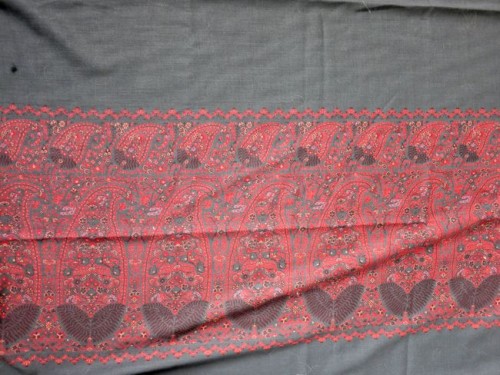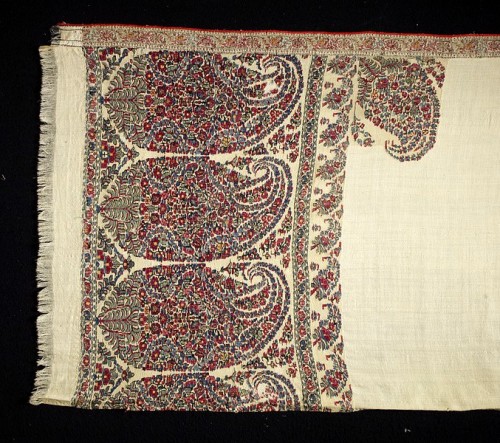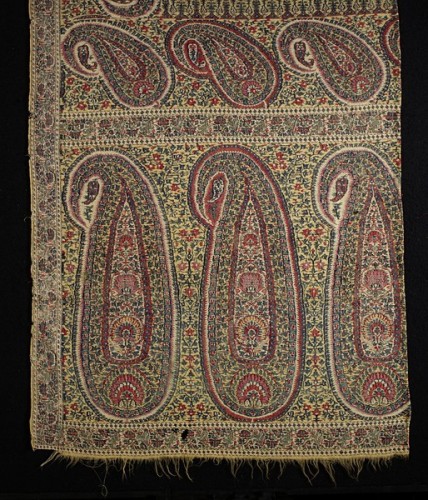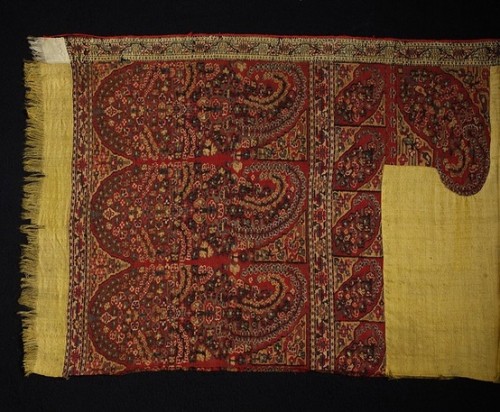Remember how I said that the fabric for the 1813 Kashmiri dress wasn’t quite accurate?
Well, I’ve done some more research, and it turns out it is more accurate than I thought.

My paisley bordered wool twill
First, whilst I still can’t find an image of a dress made from a Kashmiri shawl that is darker than the cobalt blue of Salome’s (and I still think that one is at least half fantasy, though there are extent cobalt blue shawls, and at least one extent shawl-inspired dress in cobalt blue), I have managed to find an extent paisley shawl that is black:
It’s a European shawl in silk and cotton rather than a Kashmiri shawl in cashmere, and it’s from a few years older than my dress, but where there is one, there might have been more.
And the border? Well, my double border still doesn’t match any images of dresses made from paisley shawls or extent examples of dresses made from paisley shawls, but there are a number of extent shawls with very similar borders:

Shawl, Kashmir, early 19th century, Woven cashmere, V&A
If only my wool had come in yellow rather than grey!
So all in all, I’m pleased that everything is even more plausible than I had thought!




Turning out to be right in retrospect is a very happy feeling. 🙂
Agreed! And it’s still a very beautiful dress.
Finding the black shawl must have been a happy moment! How interesting.
The pattern of your border is bound to have been copied from an existing pattern, I imagine. The winged motif at the base of the form is interesting and unusual, and I imagine it is related to the Zoroastran symbol. I Googled it, and the Paisley pattern is indeed Iranian in origin. “…it is the convergence of a stylized floral spray and a cypress tree: a Zoroastrian symbol of life and eternity.” Yours comes with extra winged emphasis. Very interesting! Might this be a topic for a terminology post some time?
That is always exciting to find something out like that! More fun than the other way around!
Laurie